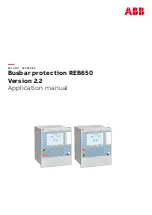
The ACE-RIU audio output can drive bridged loads or single-ended loads. Bridged loads are
not connected to an external ground point. Examples include differential inputs to pro-
fessional audio recorders, mixers, amplifiers, headsets and “floating” speakers. Single-ended
loads have signal returns that are connected to an external ground point. Examples include
inputs to consumer-grade audio devices like tape recorders and PC sound cards.
Each channel is capable of supplying 1 Watt RMS into a bridge connected 8 W load. If a
single-ended 8 load is connected to the output, the ACE-RIU is capable of supplying 250
mWatts RMS.
The output impedance of each channel is typically 0.1 into an 8 load.
Each ACE-RIU channel provides a balanced output with a maximum signal level of 10 V
pp
.
When used to drive a single ended load, the output maximum signal level is 5 V
pp
. When
driving bridge-connected loads (differential, with no ground connection), connect both the
Audio Out + (pin 2) and Audio Out (pin 7) to the load.
When driving single-ended loads (with external ground connection), connect only the Audio
Out + (pin 2) to the input side of the load and Ground (pin 5) to the grounded side of the
load. Audio Out (pin 7) must be left unconnected. The single-ended configuration ties the
ACE-RIU signal return ground to the external ground, which may introduce noise from the
external ground into the ACE-RIU audio circuit. If external ground noise is introduced into
the ACE-RIU in the single-ended configuration, it may be necessary to connect the ACE-RIU
output to the load through a bridge-connected isolation transformer (see figure above). By
default, the ACE-RIU has a DC blocking capacitor in line. ASTi does not recommend adding
the jumper to remove the DC blocking capacitor.
Caution
: Failure to follow the installation instructions for single-ended applications may
result in ACE-RIU damage that is not covered by the product warranty.
Copyright © 2022 Advanced Simulation Technology inc.
11
ACE-RIU Technical User Guide (Rev. K, Ver. 4)
Summary of Contents for ACE-RIU
Page 2: ......















































